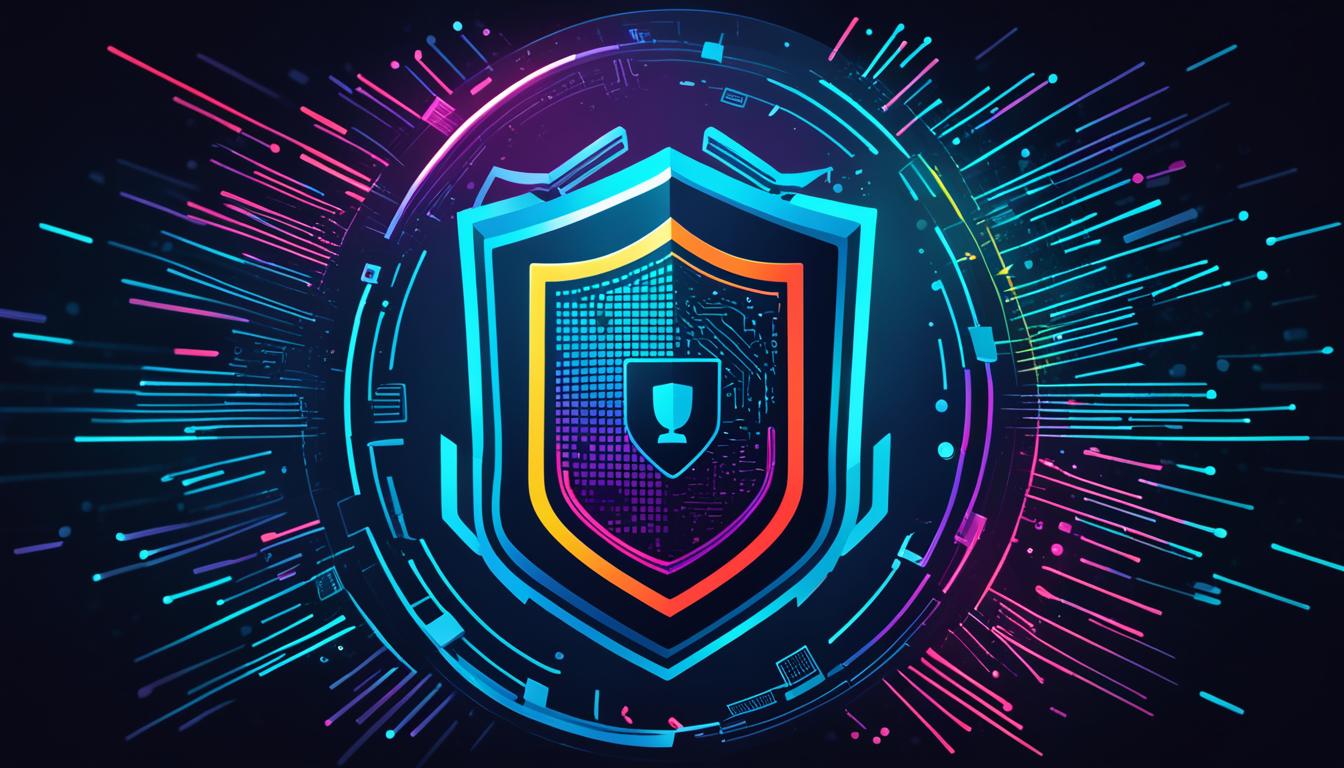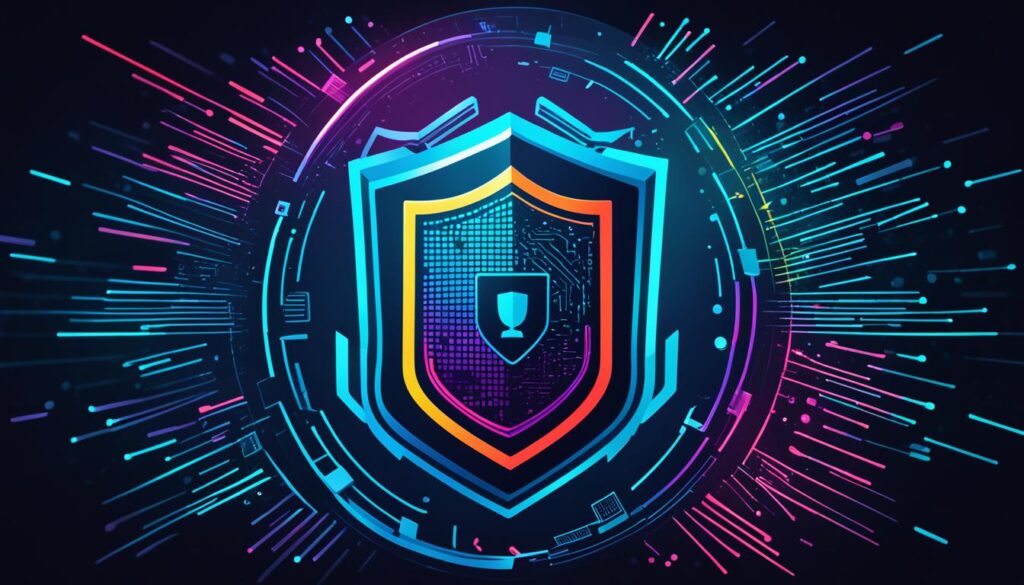What is Cybersecurity? Types, Threats, and Cyber Safety Tips 2025

What is Cybersecurity? Types, Threats, and Cyber Safety Tips
Have you ever thought about what keeps our online lives safe? Cybersecurity is like a shield for our digital world. It’s more important than ever. We’ll look into what cybersecurity is, the threats out there, and how to stay safe online.
Cybersecurity keeps our digital lives safe. It’s not just about complex tech or firewalls. It’s about knowing how to protect our data and stay safe online. This guide will help you understand cyber threats and how to protect your digital world.
Key Takeaways
- Cybersecurity is essential for protecting digital assets and information
- Cyber threats are constantly evolving, requiring ongoing vigilance
- Understanding basic cybersecurity concepts helps in personal and professional protection
- Implementing strong data protection measures is crucial in the digital age
- Regular updates and education are key to maintaining effective cybersecurity

What is Cybersecurity: Understanding the Basics
Cybersecurity keeps digital systems, networks, and data safe from threats. It’s key in our connected world. Let’s dive into the basics of cybersecurity: what, why, and how.
Defining Cybersecurity in Simple Words
Cybersecurity means protecting digital assets. It’s like a digital shield that keeps out online threats. It uses tools, processes, and practices to keep information safe from unauthorized access or theft.
The Importance of Cybersecurity in Today’s Digital Age
Why is cyber security important? Our lives are more digital now. We bank, shop, and talk online, which puts us at greater risk for cyber attacks.
Strong cybersecurity protects personal information, financial data, and privacy. For businesses, it protects customer data and prevents major breaches.
Key Components of a Robust Cybersecurity Strategy
A good cybersecurity plan has several parts:
- Network security: Keeps computer networks safe from intruders
- Information assurance: Makes sure data is correct and available
- User education: Teaches people to spot and avoid cyber threats
- Incident response: Has plans for security breaches
By using these parts, people and companies can build a strong defense against cyber threats. Remember, cybersecurity is always changing. We need to stay alert and update our defenses to keep up with new risks.
The Evolution of Cyber Threats: Past, Present, and Future
Cybercrime has changed a lot since the first computer virus. Back then, cyber-attacks were mostly harmless pranks. Now, they are a big threat to both people and businesses.
Malware started to appear in the 1980s. Viruses spread through floppy disks, causing small problems. By the 2000s, cyber attacks had become more complex. Hackers started targeting important places like banks and government offices.
Today, cyber threats are much more complicated. Ransomware attacks encrypt data and demand money to unlock it. Phishing scams trick people into sharing private information. Advanced threats can hide in networks for a long time without being found.
The future of cybercrime looks scary. As technology gets better, so do the skills of hackers. We can expect to see:
- AI-powered attacks that adapt to cyber defense measures
- Quantum computing threats that can break current encryption methods
- Attacks on Internet of Things devices, from smart homes to medical implants
To fight these threats, we need to keep improving our defenses. Companies should invest in the latest security tech and train their teams. People should also be careful and follow good online safety habits to avoid getting hacked.
The fight against cybercrime is never-ending. As threats change, so must our defenses. By learning from the past and understanding today’s threats, we can get ready for what’s coming next.
Common Types of Cyber Attacks and How They Work
Cyber attacks come in many forms, each exploiting weaknesses in a unique way. Knowing about these threats is key to preventing hacking. Let’s examine the most common cyber attacks and how they work.
Malware: Viruses, Trojans, and Worms
Malware is harmful software that can damage or access computer systems without permission. Viruses attach to files and spread when opened. Trojans pretend to be safe software but aren’t. Worms can spread on their own without anyone clicking on them.
Phishing and Social Engineering Attacks
Phishing attacks trick people into giving out sensitive info through fake emails or websites. Criminals pretend to be trusted sources to get passwords or financial details. Social engineering uses tricks to make people share private info.
Ransomware: A Growing Threat to Businesses
Ransomware locks up victims’ files and demands money to unlock them. This can really hurt businesses by blocking access to important data. Ransomware often comes through phishing emails or by exploiting software bugs.
Distributed Denial of Service (DDoS) Attacks
DDoS attacks flood targets with a huge amount of traffic from many sources. This can make websites or networks crash. Botnets, groups of hacked computers, are often used for big DDoS attacks.
- Keep software updated
- Use strong, unique passwords
- Enable two-factor authentication
- Be cautious of suspicious emails and links
- Regularly back up important data
Understanding these common cyber attacks helps people and businesses get ready and take steps to protect their online stuff.
Essential Cybersecurity Measures for Individuals and Businesses
In today’s world, keeping your digital stuff safe is key. Both individuals and companies must take strong security measures to protect their data and systems from cyber threats.
Firewalls are your first defense against hackers. They watch and control what goes in and out of your network. This helps stop bad attacks. Make sure your firewalls are always up to date to keep your data safe.
Encryption is crucial for keeping data private. It turns information into a code that only the right people can read. To keep sensitive data secret, use encryption for all data, both when it’s moving and when it’s stored.
For strong digital protection, you need good security plans. This means:
- Regular software updates and patches
- Strong password policies
- Multi-factor authentication
- Employee training on cybersecurity best practices
Keeping your data private is very important. Be careful with your personal info online and adjust your social media privacy settings. Companies must follow data protection laws and keep customer data safe.
By following these key cybersecurity steps, people and companies can lower their risk of cyber attacks and protect their important digital assets.
Conclusion
Cybersecurity is key in our digital world. Threats change often, so we must always be alert. Strong cyber resilience is now crucial for everyone, from individuals to businesses.
Managing risks starts with knowing the threats we face. We need different defenses for each type of attack, such as malware and phishing. Regular checks help spot vulnerabilities before hackers can exploit them.
Stopping cybercrime is a team effort. We can all help by using strong passwords, keeping software updated, and learning about new threats. Being proactive is the best way to fight against cyber attacks.
Let’s make these cybersecurity habits part of our daily lives. This way, we protect ourselves and help make the internet safer for everyone. Stay alert, keep learning, and let’s move forward together in this changing digital world.
FAQ
What is cybersecurity?
Cybersecurity protects computer systems and networks from unauthorized access or damage. It ensures data and systems stay safe and work well.
Why is cybersecurity important in today’s digital age?
Cybersecurity is key because we rely more on digital tech and the internet. Without it, we face risks like data theft and financial loss. It’s vital for protecting our digital world.
What are some common types of cyber threats?
Common threats include malware, phishing, ransomware, DDoS attacks, and unauthorized access, which can harm our digital information and systems.
How can individuals protect themselves against cyber threats?
To stay safe, use strong passwords, update your tech, be wary of suspicious emails, use antivirus software, and surf the web safely.
What are some essential cybersecurity measures for businesses?
Businesses should use firewalls, encrypt data, and set up security rules. They should also check for vulnerabilities, train staff, and have a plan for emergencies.
What is the role of encryption in cybersecurity?
Encryption is vital for cybersecurity. It turns sensitive data into a secret code, which only those with the right key can read.
What is ethical hacking, and how does it contribute to cybersecurity?
Ethical hacking, or penetration testing, simulates cyber attacks to find weaknesses. It helps companies improve their security by fixing these issues before hackers can exploit them.
How can organizations maintain cyber resilience?
To stay resilient, companies should have strong cybersecurity steps, do regular risk checks, and keep up with new threats. Training staff and having emergency plans also help ensure they can bounce back from cyber attacks.


